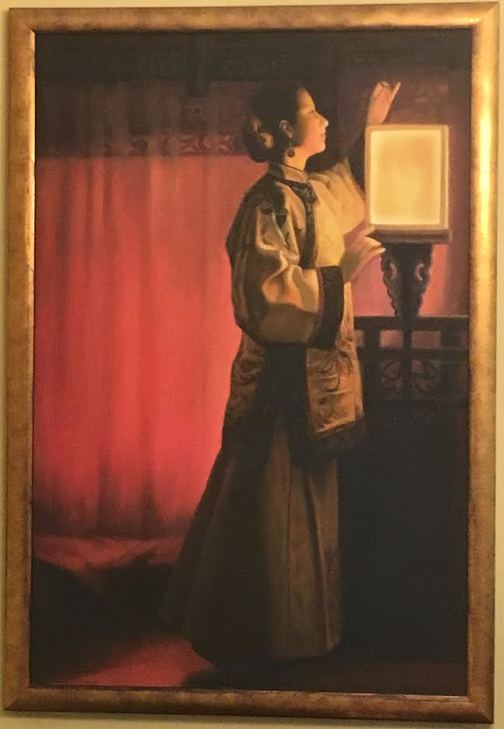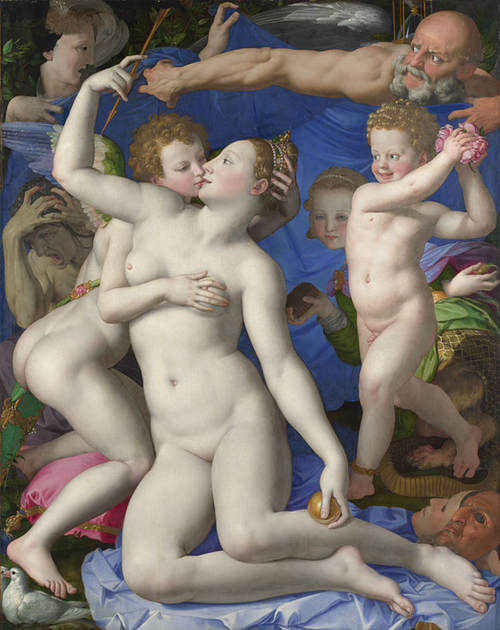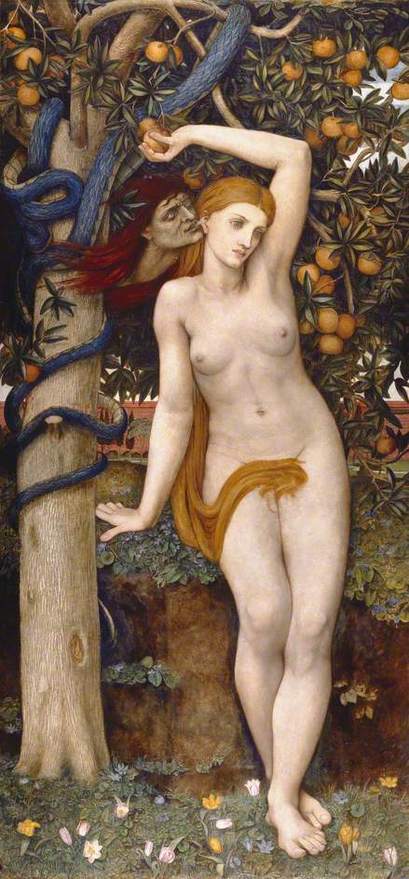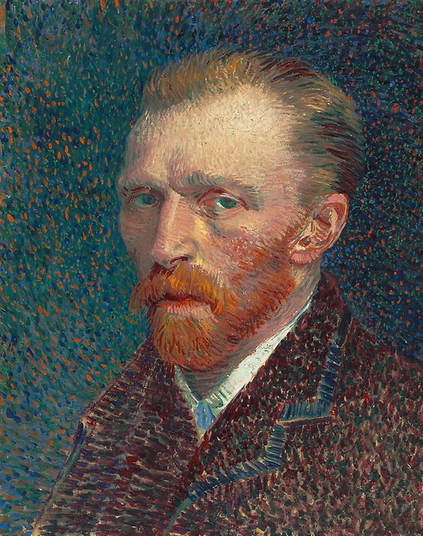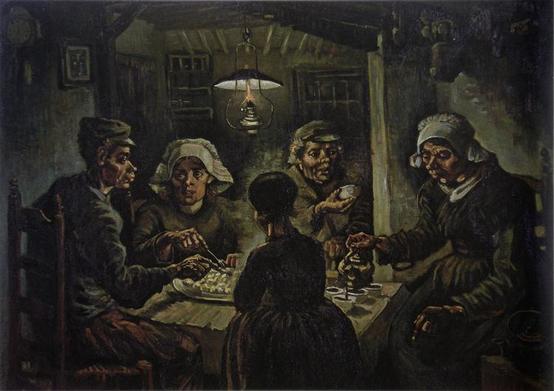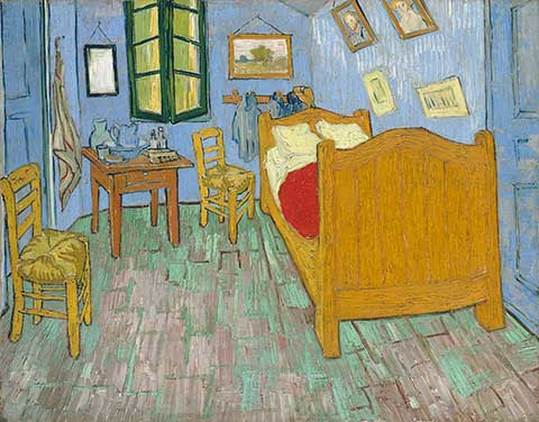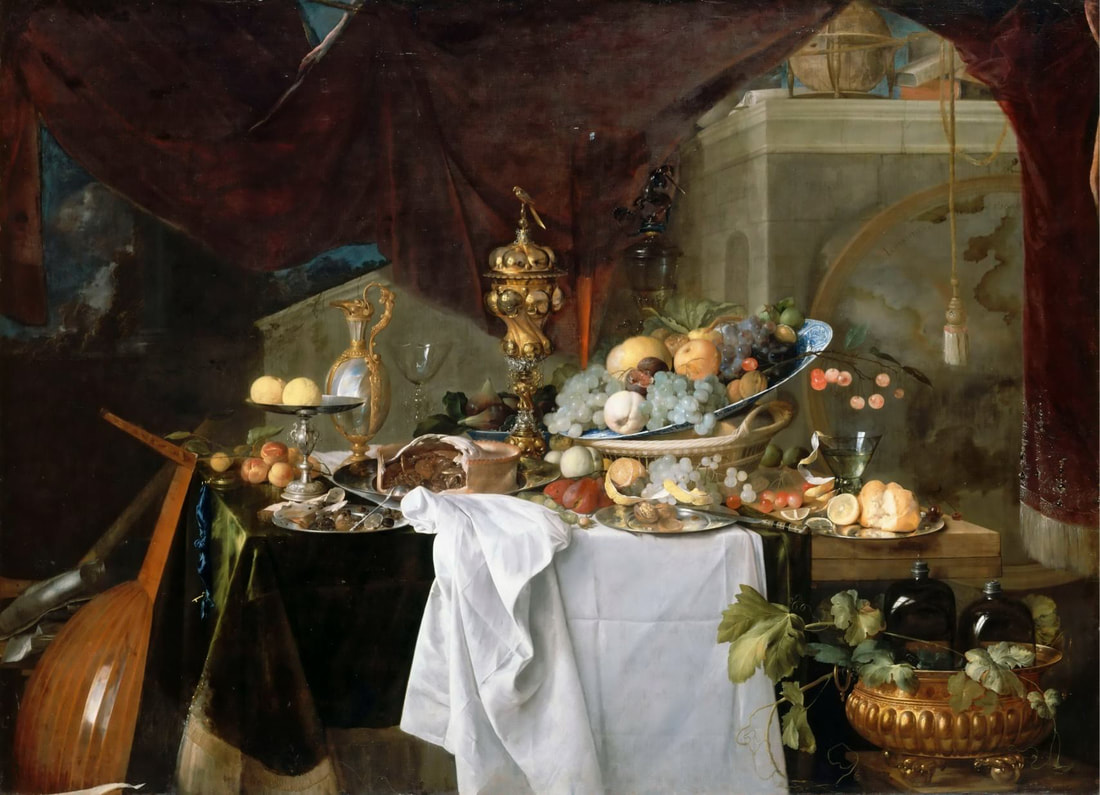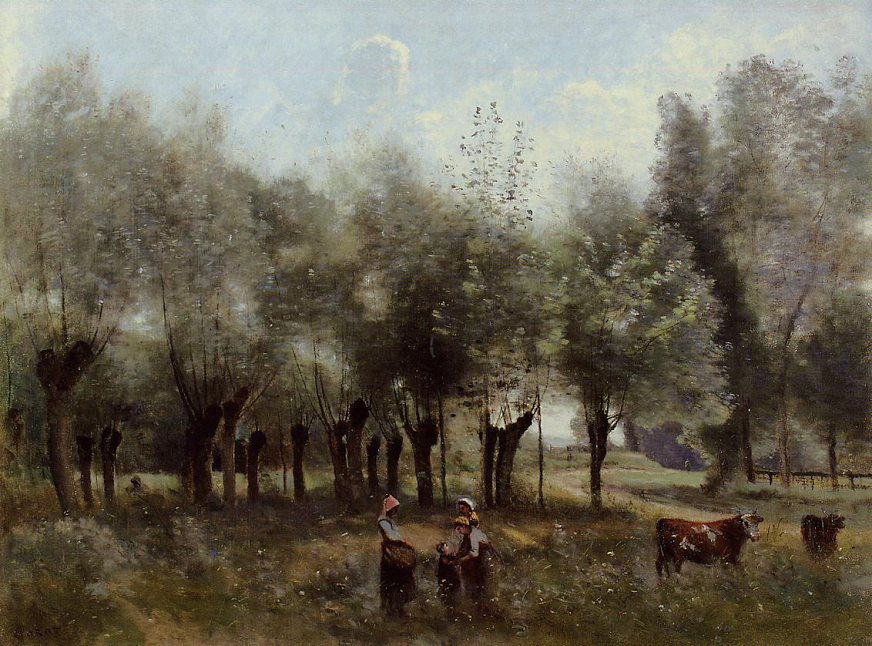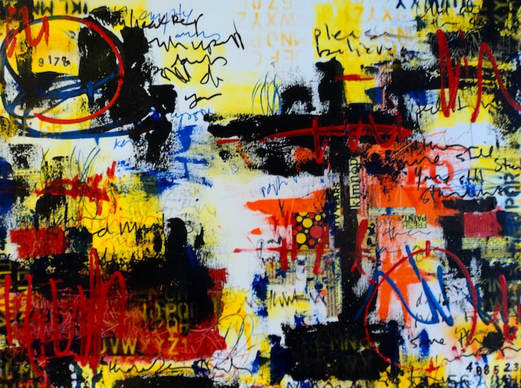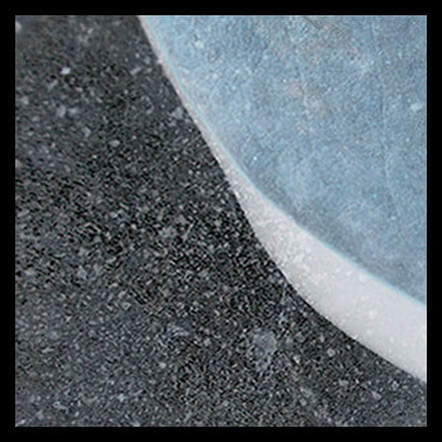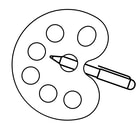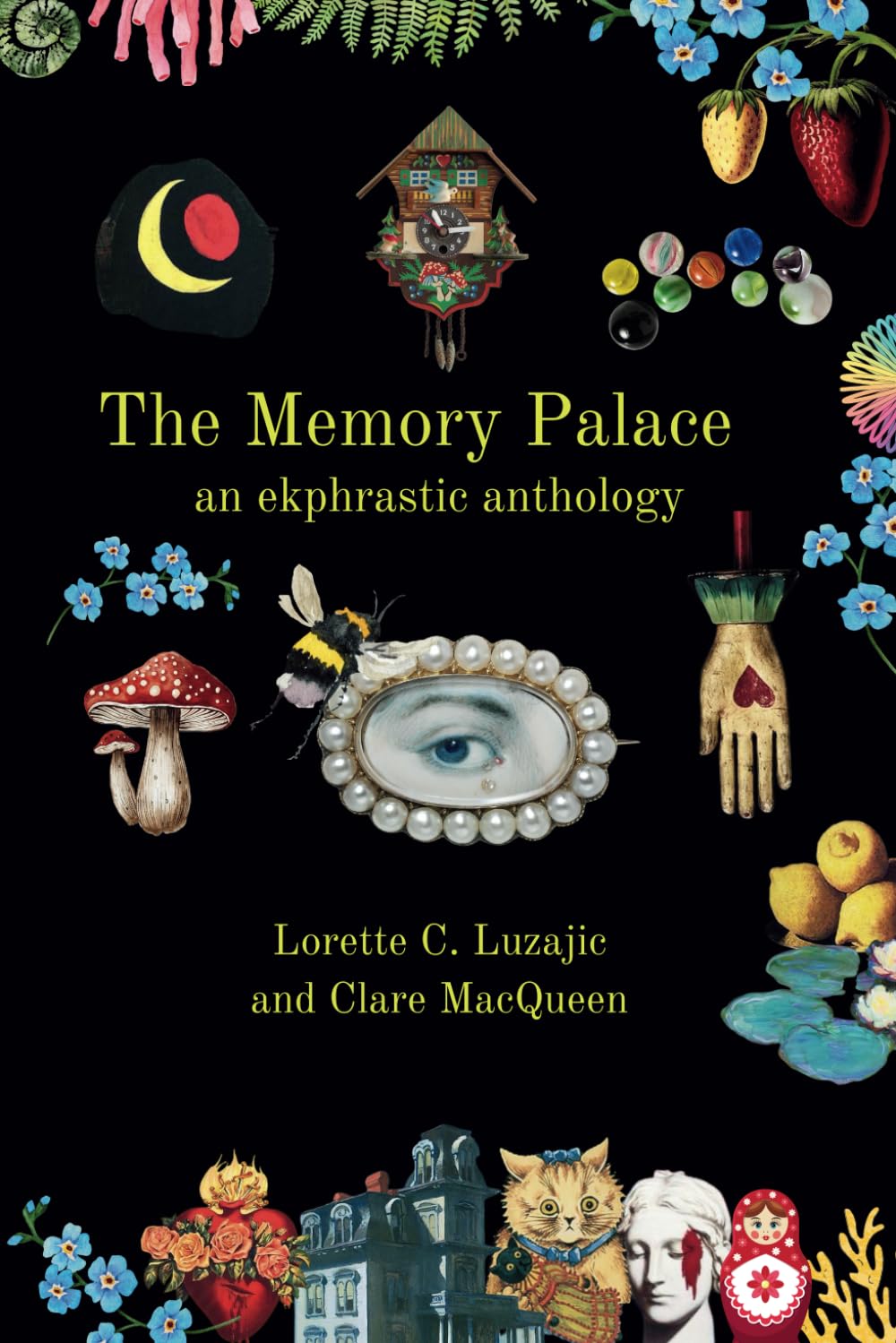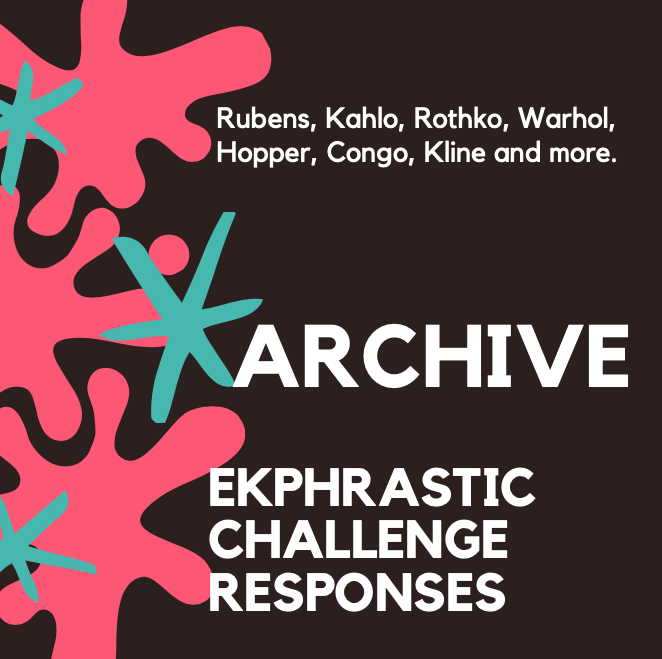|
Seeking Enlightenment
Her gown golden, trimmed with brown embroidered brocade, she stands and lights the amber lamp. Aglow with warmth, her delicate Chinese face and silk garments luminous, sheer rich Mandarin red drapes billowing behind her, she adorns the wall of my dining room. I turn to look out the window. Ice floes drift down the East River, uneven jagged frozen shapes afloat, formed by nature, movement and destiny. I turn back to look at her countenance, moment of harmony and grace captured by oil paint. There is fleeting solace in stillness. Judith Lee Herbert Judith Lee Herbert returned to poetry after a successful career in another field. She is a graduate Cum Laude in English Literature from Columbia University. Her poetry has been featured in print and online publications including the Bards Annual, the Long Island Quarterly and motheringinthemiddle.com. Her chapbook was chosen as a finalist in a competition at Blue Light Press. She enjoys reading her poetry and will continue to be featured at venues in New York City and Long Island.
1 Comment
Frozen Time at London’s National Gallery Taking shelter with a warm cup of tea at the National Cafe on a rainy London day is never a bad idea—coupled with getting lost among the plethora of luring graphics at the National Gallery. While some works seem to summon more viewers than others, there’s a particular painting I keep finding myself at an interface with, while still trying to fathom its meaning. That is none other than the gallery’s most curious, enigmatic, and perhaps even disturbing painting in room 8—or maybe even in the entire National Gallery itself. Constantly drawn towards the same canvas, I read it as a piece of visual poetry where every figure stands for something, and the observer is at the mercy of Venus’s eyes, which continue to tease the contemplator conspicuously about the painting’s hidden meanings. Agnolo Bronzino’s ‘Allegory with Venus, Cupid, Folly and Time’ lacks the typical Renaissance painting’s harmony, structure, and focus--leaving the observer with many things to view, with eyes and minds in a state of perpetual inconclusive wandering. As Venus and Cupid lay there, blatantly enamoured in an almost-kiss--lifelike, not a brushstroke in sight--one cannot help but wonder: ‘what does time have to do with this?’, ‘who’s who?’, or simply, ‘What’s going on here?’ According to Einstein, ‘For us who believe physicists, the distinction between past, present and future is only a stubbornly persistent illusion.’ This idea comes into play in Bronzino’s allegory, where all sense of time is glaciated around and within the figures of Venus and Cupid, and Time is embodied in an allegory incarcerated within the physical boundaries of the painting’s ontic reality. Beyond all this, it is interesting, and maybe even a bit amusing to contemplate this Renaissance masterpiece in terms of some modern philosophical theories on time here and there. While savouring the different hues of colour, we tend to find these theories in a medium where space and time are not absolute, but rather, are represented in a two-dimensional continuum. But the painting’s enigma remains unsolvable…there still is a lack of consensus, a large amount of dissention, and varying degrees of certainty on the identification of the painting’s figures. A spooky, hollow, eyeless, and perhaps brainless figure who’s believed to be Oblivion looms above the couple in the upper left corner of the painting, while below her stoops an anguished figure interpreted as Jealousy (and later on, seen by some scholars as Syphilis). Towards the lower right is a twisted, anatomically distorted ‘lady’ holding honeycomb (pleasure) in one hand and her stinging tail in the other--her twisted posture and serpent tail trick the reader into seeing that her right hand is her left, making her known as the embodiment of Deception. By her side, Folly carries roses toward the couple, while stepping on some thorns himself. However, the major focal figure besides Venus and Cupid is Chronus, or Father Time, the white-bearded figure at the upper right of the painting, with his hour glass on the back of his shoulders and his arms about to move a silk blue drape either away from or over Venus and Cupid. One thing that is for sure in the painting is that Time is present, but he is not perceived or experienced by neither of the two ‘lovers’. Many art historians and other interpreters have seen Time’s gesture with the cloth as an attempt at unveiling the couple, but it can also be seen from an opposite vantage point: an attempt to conceal, rather than reveal. I see Chronus’s gesture in that light, by taking into consideration a modern theory on time--namely that of Sartre. Moving forward a few centuries and having Sartre in mind, the allegory suddenly appears to make a different type of sense to me--albeit one that may be a bit far from the painter’s intentions--as some pieces of this intellectual puzzle begin to fall into place. Both Venus and Cupid appear to be completely unaware of Chronus and the other figures surrounding them (Folly, Deception, Oblivion, and Jealousy/Syphilis) in a complete detachment from both time and their experience of it (temporality), which reminds me of Sartre’s notion on time and the dissociation between chronos (clock time) and kairos (the experiencing of time). According to Sartre, ‘time is, above all, that which separates and the only solution for certain individuals is to freeze time, to stop the clock in order to foreclose the possibility of separation. The result is a present that is completely subsumed by the past and where the possibilities of the future are forever denied.’ Since temporality is a vital factor for the occurrence of separation, the denial of chronological time makes way for fantasies of interminability—on Bronzino’s canvas. The painting is typically mannerist in figura serpentina form, and the figures’ appearances as frozen objects in motion actually helps in portraying this rupture in experiencing time; the relationship between chronos and Kairos is destructed, hence leading to the pausing of time, along with the timeless concepts. Looking again, the concept of ‘freezing’—with the act of Chronus’s concealment of the embracing couple—pervades the painting in many ways. There is an icy coolness in the lascivious eyes and pose of Venus and Cupid, who have not usually been seen embracing in that manner. What also strikes me is that despite the passionate embrace, Bronzino seemed keen on keeping Venus and Cupid in the pale, stony color of cold marble, save for the ears and cheeks, which appear to be the only ‘warm’ spots in pink. Besides Venus’s frozen gaze and her complete dissociation from time and inexperience of temporality, the almost-dropped blue cloth reflects a protective measure--the freezing of time is meant to protect Venus and Cupid from the negative costs of pleasure and a kind of denial of the low qualities of love: Deception and Folly are at the right, along with Oblivion and a gruesome embodiment of Jealousy/Syphilis to the left. Folly’s stepping on the thorns may also signify the dangers of accompanying pain of such ‘love.’ The denial of time through freezing it is not only out of fear of separation, but it is out of Cupid and Venus’s fear of the other viles resulting from their transgressive love. Considering the fact that the painting was a gift from Cosimo de Medici to King Francis the 1st, and knowing the latter king’s love for puzzles and symbols, the motive behind Bronzino’s mystification is quite understandable…and perhaps the role of Time will remain unclear in Bronzino’s allegory. But whether the painting really illustrates this peculiar forbidden love’s denial/freezing of Time or not, there is an obvious break in—or lack of—their perception of it. And so, over a warm cup of tea, we continue the post-museum conversation about the loads of work art history still has ahead …until my brain can only respond by constructing a poem: From a spout among the ebony waves, I shake off a pair of tiny wings. A flutter fans its way out, Glossing away from the raven-dark depths, floating off, away from the confused mass, toward the glowing embers of a mysterious flicker …Like a moth to a flame I do not understand. Roula-Maria Dib Roula-Maria Dib is a university professor at the American University in Dubai where she teaches courses of English language and literature. She has published some poems, essays, and articles in magazines and journals such as Renaissance Hub, The Journal of Wyndham Lewis Studies, Agenda, Two Thirds North, and The Archive for Research in Archetypal Symbolism (ARAS). She is also currently finishing her PhD in Modernist Literature and Psychoanalysis from the University of Leeds in the UK. Her dissertation focuses on Modernist literature (namely the works of James Joyce, Hilda Doolittle, and W.B. Yeats) in light Carl Jung’s psychological theory of individuation, or spiritual transformation. The themes that pervade her work usually revolve around different aspects of human nature, art ekphrasis, surrealism, and the collective unconscious. John Roddam Spencer Stanhope’s Eve Tempted by the Serpent Because it promised her it would not tell, she didn’t leave although she thought she should. She stood there watching where the apple fell. A moment’s angst—she’d felt her stomach swell (a silly thought—she needn’t knock on wood-- because it promised her it would not tell). Inside, however, she still did not feel well, and she would undo one thing if she could-- she stood there watching where the apple fell. Before it happened, she began to yell but it calmed her and said it understood-- she made it promise that it would not tell. She thought: the path to heaven goes through hell but hoped that in the end all would be good. She stood there watching where the apple fell. The serpent hissed, then coiled into a shell, still looking at her from beneath its hood. Because it promised her it would not tell, she stood there watching where the apple fell. Stephen Gibson Stephen Gibson: "My latest poetry collection, Self-Portrait in a Door-Length Mirror, was selected by Billy Collins as winner of the 2017 Miller Williams Prize from the University of Arkansas Press and was published this past January. I’ve also published six prior collections: The Garden of Earthly Delights Book of Ghazals (Texas Review Press, 2016), Rorschach Art Too (2014 Donald Justice Prize, Story Line Press, West Chester University), Paradise (Miller Williams prize finalist, University of Arkansas Press), Frescoes (Lost Horse Press book prize), Masaccio’s Expulsion (MARGIE/IntuiT House book prize), and Rorschach Art (Red Hen Press)." Van Gogh in Chicago
Every portrait that is painted with feeling is a portrait of the artist, not of the sitter. ~Oscar Wilde Do you know where you are dear man? City of hog butchers shoulder to shoulder with potato eaters. Looking at you I flatter myself and think you might recognize me. – you are half drunk, half critical. No matter where I stand you do not see me. Outside the museum self-portraits walk La Salle Street in the rising heat, tremble on the El past cell-sized rooms where bodies rest two-by-two. Walking these streets I feel your breath at my ear whispering look, no one lives beyond their face. How did you do it? Did you rise from the yellow bed, comb your beard, put on your overcoat and sit before the mirror? Only to end in the white quiet of a gallery hall staring at yourself on the opposite wall. So far from anything like an open field of sunflowers, stalwart under a starry sky. Tina Schumann Tina Schumann is the author of three poetry collections, As If (Parlor City Press, 2010) which was the recipient of the Stephen Dunn Poetry Prize, Requiem, A Patrimony of Fugues (Diode Editions, 2016) which won the Diode Editions Chapbook Contest for 2016, and Praising the Paradox (Red Hen Press, 2019.) She is curator and editor of the anthology Two- Countries. U.S. Daughters and Sons of Immigrant Parents (Red Hen Press, 2017.) Her work was named a finalist in the National Poetry Series, Four Way Books Intro Prize and the New Issues Poetry Prize among others. She is the recipient of the 2009 American Poet Prize from The American Poetry Journal, a Pushcart nomination and finalist status in the 2013 Terrain.org Annual Poetry Contest, as well as honourable mention in The Atlantic 2008 poetry contest. Her poems have appeared in publications and anthologies since 1999 including The American Journal of Poetry, Ascent, Atticus Review, Crab Creek Review, Cimarron Review, Midwest Quarterly, Nimrod, Parabola, Palabra, The Human, The Yale Journal for Humanities in Medicine and Verse Daily. www.tinaschumann.com Still Life
Somehow one art work distills all human form-- the artifacts of our desire together in one oiled portrait brimming with solicitous details of everyday fact. A congeries of plant, mineral, animal just at that equipoise of viewpoint, butterfly still fluttering against the pin of the zoologist eager to frame the right colours and textures, a mind convinced of transcendent virtue. Stillness is such a tempting misrepresentation of empire and cruelty. David Radavich David Radavich's recent poetry collections are America Bound: An Epic for Our Time, Middle-East Mezze, and The Countries We Live In. His plays have been performed across the U.S., including six Off-Off-Broadway, and in Europe. He has served as president of the Thomas Wolfe Society, Charlotte Writers' Club, and North Carolina Poetry Society and given performances in such countries as Egypt, Germany, Greece, and Iceland. www.davidradavich.org. For Corot
You, Corot, my hero, of course you know I bought a book of your drawings thirty years ago and slept with it under my pillow for a year or more slowly absorbing your soul into my own You, Corot, sometimes so sombre often I wonder how you capture that leafy silver in your gossamer trees How do you control the brush to form the contours of the rocks and pines of forest and countryside? Your compositions are mine I am with you as you sit at your easel in the fields, painting shepherds and their flocks of sheep capturing peace I breathe your air and see with your eyes the ease with which your brush strokes rapidly as you stroll through nature ever the observer I walk down your shadowy paths in the near night of the twilight of your canvases and hear birds sing lullabies from your ethereal trees I know your need to be alone in the forest and feel your oneness with the cosmos Your portraits haunt me your landscapes enchant me Am I, are you, part of the same soul? Are you now me? Was I once you? Helen Bar-Lev Helen Bar-Lev was born in New York in 1942. www.helenbarlev.com She holds a B.A. in Anthropology, has lived in Israel for 46 years and has had nearly 100 exhibitions of her landscape paintings, 34 of which were one-woman shows. Her poems and artwork have appeared in numerous online and print anthologies. Six poetry collections, all illustrated by Helen. She is the Amy Kitchener senior poet laureate and was nominated for the Pushcart Prize in 2013. She is the recipient of the Homer European Medal for Poetry and Art. Helen is Assistant to the President of Voices Israel. She lives in Metulla, Israel. why I didn’t marry the drummer why I didn’t keep weeping mingus, hang my head till billie buried in me, till davis done gone and gone again the miles beyond the bird flew a rat-tat-tapping trapped in the tree of me with sticks that trip still on stretched skin, skid to the tin roof of blues and bessie and the beat of hold-me-till-I-don’t-break-into-coltrane and lena-listen-while-the-love-gone-song struts its stuff into drum, into sound and stick shacked-up with max and riff. can’t sing straight with a voice of vows through the late-night shift. Marjorie Maddox Versions of this poem were previously published by The Medulla Review, Urban Spaghetti, and Silver Birch Press. Sage Graduate Fellow of Cornell University (MFA) and Professor of English and Creative Writing at Lock Haven University, Marjorie Maddox has published eleven collections of poetry-including True, False, None of the Above; Wives' Tales; Local News from Someplace Else; Perpendicular As I; Weeknights at the Cathedral; and Transplant, Transport, Transubstantiation; the short story collection What She Was Saying; the anthology (co-editor) Common Wealth: Contemporary Poets on Pennsylvania and four children's books. For more information, please see www.marjoriemaddox.com Woman Playing Kithera, With Her Servant The woman’s husband, a judge, arrives home from court, demanding his wife play the kithera to soothe his frazzled bones. The woman, frightened but obedient, plays. Her faithful servant and confidante stays to protect her. Another servant serves the judge a glass of Mulsum wine. She returns to the kitchen, continues preparing dinner. The woman plays the kithera. Her husband sips wine and drinks in the music. They have an arranged marriage and two children, Julietta and Romeo. The woman fears for her small children. Their father, a martinet. She fears gnawing poverty; life without her children. He would keep them to spite her. She stays. The woman studied the kithera for enjoyment; an outlet: expression against his suppression. She wants to feel alive. She plucks the kithera strings wanting to shut out her life. Hoping to soar high above the Colisseum, even past Michelangelo’s art in the Sistine Chapel. She imagines her art to be the Pieta of music. But when she sees her husband, her dreams plummet as streams of the kithera float through the stiff, unyielding air, while her servant keeps an ever watchful eye. Juanita Torrence-Thompson Juanita Torrence-Thompson, Pushcart nominated poet, Short story writer, playwright, events producer. Former Adjunct Professor, former actress and former editor-in-chief/publisher of award-winning Mobius the Poetry Magazine for 7 years. Mobius and her books were Small Press Review “pick”. Awards for poetry, short fiction, feature articles, children’s poetry. Short fiction & poetry published internationally, with poems translated into 15 languages. Latest poetry book, When Morning Comes. Book #10 is forthcoming. Her 2nd play, “The Place,” was recently produced in New York City. She holds M.A. from Fordham University. Reads prose and poetry in Singapore, Switzerland, South Africa, Canada, U.S. www.poetrytown.com nocturna
the stars do keep their secrets, loving planets draped with rim of breath, huddling down toward stratosphere-- nurturing we are looking back through blue, that dimming lens, to see the filamentous cosmos arching ever sparks are we within, alive Samara Golabuk Samara is a Pushcart nominee whose work has appeared or is forthcoming in Eyedrum Periodically, Anti-Heroin Chic, Eunoia Review, Plum Tree Tavern and others. She has two children, works in marketing and design, and has returned to university to complete her BA in Poetry. More at www.samarawords.com. Lili au Rivoli
She holds faint half tones, soft tides of inner seas. Picture her hidden steps, three button pearls, arch clipped, kid white, a cursive calf slips. Lips, chin, slim line of bud and bough, pure as cherry blossom in some far off Kyoto garden. He touched her hand, the pale peony shifting of her hip, even this Boulevard flowers skin, cigars, dark serge, his lingering Guerlain that woos her now, as knowing as the Seine. Follow. Her eyes are smooth as challis, and these trees hold liquid light as if all worlds have turned to gold. She will not look, her chapeau shadows, leads, bares a naked nape, now blood-blushed roses bloom. Mary Gilonne Mary Gilonne is a translator, living in France near Aix-en-Provence for many years, but originally from Devon U.K. She has won the Wenlock Poetry Prize, been shortlisted for the Bridport and Elbow Room Prizes, commended in the Prole, Buzzwords, Teignmouth and Caterpillar Prizes. Her work has appeared in Antiphon, Clear Poetry, Spontaneity, Smeuse, The Curlew, Grievous Angel, Snakeskin, Unbroken Magazine, Emma Press among others, and in several anthologies. |
The Ekphrastic Review
COOKIES/PRIVACY
This site uses cookies to deliver your best navigation experience this time and next. Continuing here means you consent to cookies. Thank you. Join us on Facebook:
July 2024
|
